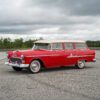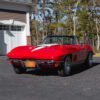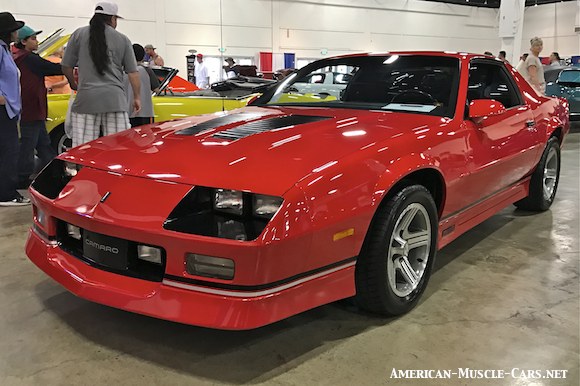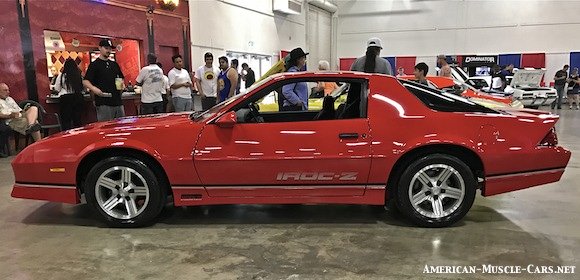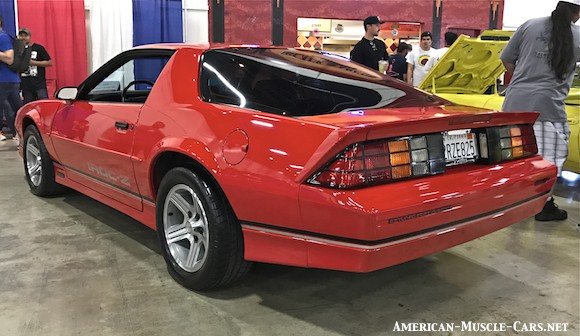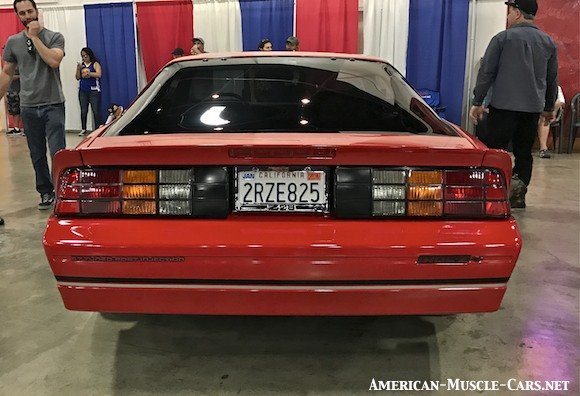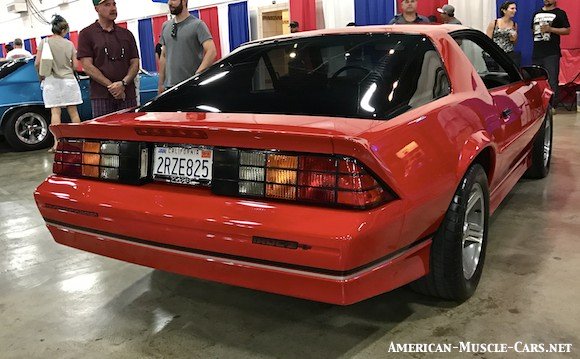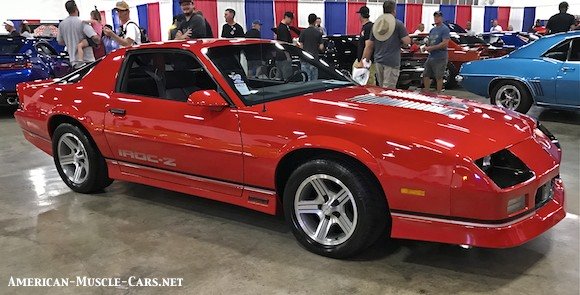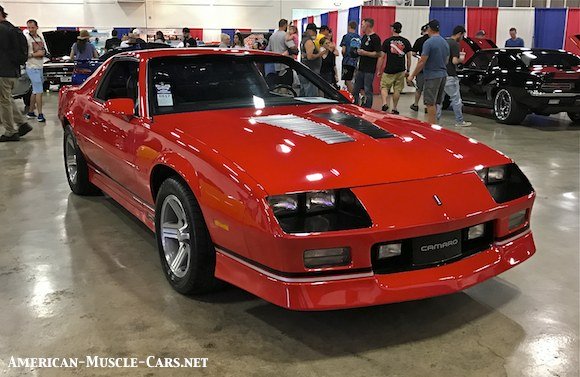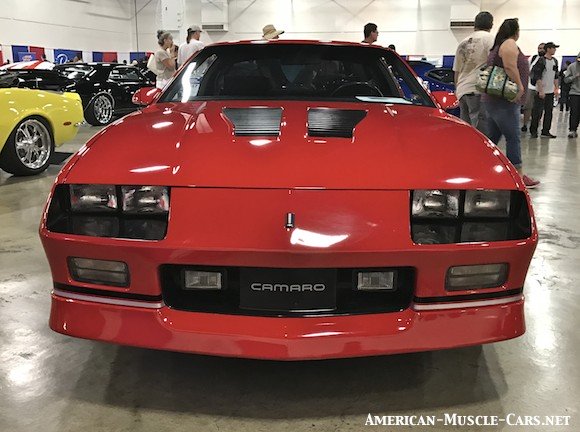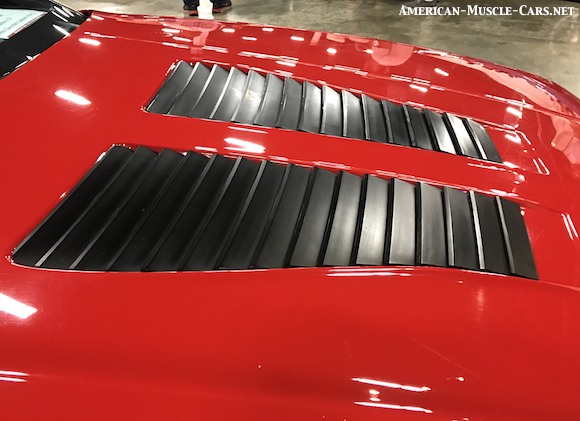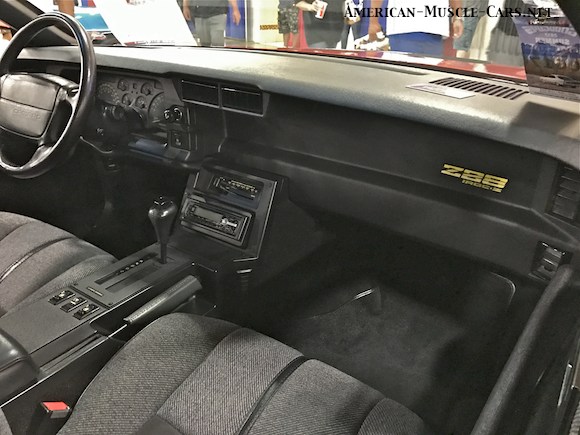1990 Chevrolet Camaro
1990 Chevrolet Camaro IROC-Z

1990 CHEVROLET CAMARO IROC – BUILT FOR CHAMPIONS
The International Race of Champions, or IROC-series, pitted race drivers against one another in identical cars, as a pure test of drivers’ skills, rather than the budget of the team owner. From 1985 through 1990, that car was the Chevrolet Camaro. In 1985, it started out as the Camaro Z/28 IROC-Z. By 1988, they’d dropped the Z/28-part, and just started calling it a Camaro IROC-Z. This continued through the 1990 model year, when the racing series switched over to another car (the front-wheel-drive Dodge Daytona Turbo). At that point, Chevrolet lost the rights to use the name and went back to calling them Z/28s starting with the 1991 model year. This makes 1990 the last year Camaro IROCs were produced. And as it turns out, it was a very interesting year.
ABOVE: 1990 was the last year for the louvered hood. Introduced on the 1985 Z/28, it was the standard hood on all 1985-1990 Z/28s and IROC-Zs. They didn’t actually work, they were purely for looks.
BELOW: The 16-inch IROC rim, standard on all 1985-1990 IROC-Zs, and optional on 1985-1986 Z/28s. The offsets were different, front-to-back. They came shod in 245/50-16 Goodyear Eagles.

1990 Chevrolet Camaro INTERIORS
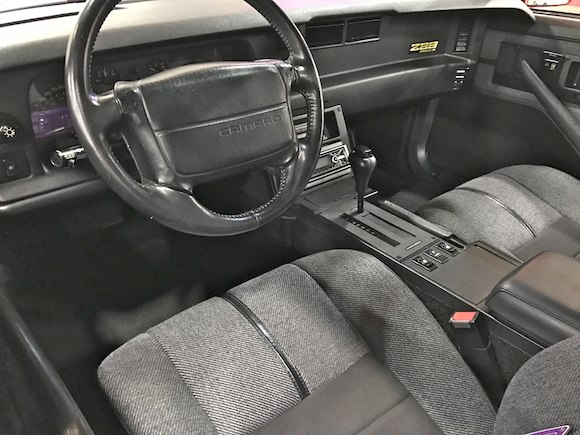
IROCs WITH AIRBAGS 1990 happened to be the first year for drivers-side airbags in GM cars. So an entirely new steering wheel, steering column and instrument cluster were redesigned at the same time. This makes the 1990 IROC not only the last IROC, but also the only year with an airbag. These early airbags are big and bulky, and housed in the soft cast-vinyl steering wheel face. There is a large groove running horizontally across the face, this is the point where it’s supposed to tear upon airbag deployment. I don’t know how they do it these days because you never see seems like this anymore, and now I know why. They’re thin and vulnerable to damage, and many of them start to tear. This is all exacerbated by aging and solar heat.
HOW TO CHECK THE AIRBAGS
It’s technically illegal to buy or sell used airbags, and new ones are expensive, so try to avoid a costly replacement. If you’re considering buying one of these airbag Chevrolet Camaros (1990-1992), turn the key on and watch for the flashing “Airbag” light. It should flash seven times, as the computer runs through the entire airbag system, then turn off. If it stays on, then you’ve got a problem somewhere in the system. If it never blinks, then the light is not working, which could indicate the seller could be hiding something, by sabotaging the light.
1990 CHEVROLET CAMARO DELUXE INTERIOR
There were three basic interiors available on the 1990 Chevrolet Camaro. The standard or base interior was a simple cloth, on the seats and door panels, and the carpet and sound-deadening were of a lower quality. The deluxe interior, shown above and below, featured a much higher-grade fabric with a tweed pattern and vinyl piping on seats and door panels, along with a higher-grade of carpet and sound deadening, and a few convenience features as standard. Lastly, the leather interior added leather seats and leather-trimmed door panels to the premium interior. The leather interior was a fairly rare option, with the premium interior, pictured here being the most common. And for good reason. They looked great, especially in either light gray or charcoal (as pictured here), and they held up well to years of use. However, typically the drivers’ seat left-side bolster would always wear out first from countless entries-and-exits. The Build Sheet, showing all the vital info on the car, including every option that was ordered on it, is located inside the console on all 1990 Chevrolet Camaros.
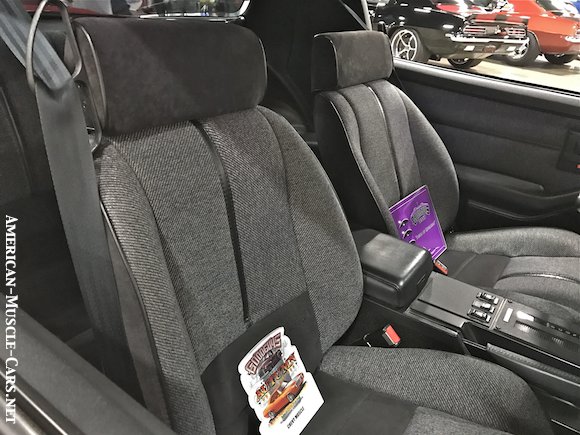
1990 Chevrolet Camaro IROC-Z ENGINES
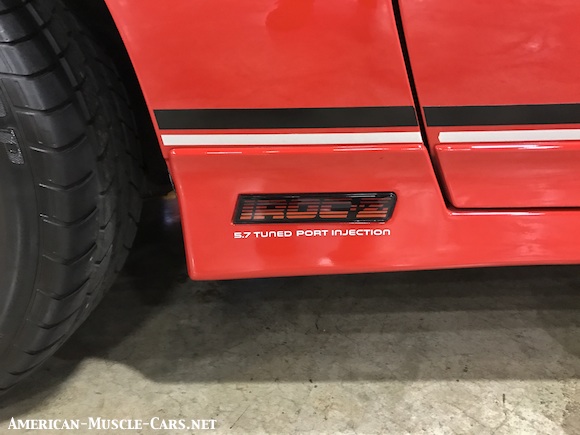
1990 CHEVROLET CAMARO ENGINE LINEUP
All RSs, which were by 1990 the base Camaros, came standard with a ho-hum 3.1L OHV V6, based on last year’s 2.8L V6, which was itself based the awful 2.5L V6 used in S-10 pickups. The bump in displacement for 1990 increased horsepower from 135 to 140. Optional on the 1990 Chevrolet Camaro RS was the L03 5.0 (305ci) V8 with TBI (Throttle Body Injection), making 170hp. Don’t be fooled, there’s almost no way of making these TBI 305s fast. Now we come to the fun stuff. The 1990 IROC-Z package came standard with the LB9 5.0L V8 with TPI (Tuned Port Injection), good for 210hp. With the optional G92 package, which included a dual-cat exhaust system, it made 225hp. The LB9 could be ordered with either a 5-speed manual or a 700R4 4-speed automatic. The top-dog engine, the mighty B2L 5.7L (350ci) V8, also with TPI made 245hp, which was the same output as the 1990 Corvette, although the Camaro had cast iron heads and the Corvette had aluminum heads and factory headers. The 5.7 V8 was only available with the 700R4 automatic, not the 5-speed. Why, you ask? Because GM never had a decent 5-speed that could handle the torque of the 5.7. Just look at the history of the Corvette. There was never a 5-speed in any Corvette, not one. They went from the 4+3 to the 6-speed, skipping right over the 5-speed. The 5-speed gearbox used the 5.0 TPI, and the 5.0 TBI in the Rs, were found to be too weak to handle the kind of abuse they’d get behind a 5.7L IROC. Hence, any 5-speed Camaro you see, even if it has TPI and even if its an IROC, will in fact have a 5.0L (305) V8. Don’t be misled into believing you’re getting a “rare 5.7 5-speed”. Never happened. Open the console and look for the above engine codes (the RPO) on the Build Sheet.
1990 Chevrolet Camaro SPECIFICATIONS
| Production, Coupe
Production, Convert. Wheelbase Length Height Track, front Track, rear Curb weight Fuel capacity ENGINE OPTIONS: 3.1L V6 w/MPFI Displacement Bore & Stroke Compresson ratio Fuel system Horsepower output Torque output 5.0L V8 w/TBI Displacement Bore & Stroke Compression ratio Fuel system Horsepower output Torque output 5.0 V8 w/TPI Displacement Bore & Stroke Compression ratio Fuel system Horsepower output Torque output 5.7L V8 w/TPI Displacement Bore & Stroke Compression ratio Fuel system Horsepower output Torque output Zero-to-60 mph Zero-to-100 mph Quarter mile |
1990 CHEVROLET CAMARO RS
28,750 729 101.0″ / 2565 mm 192.0″ / 4877 mm 50.3″ / 1278 mm 60.0″ / 1524 mm 60.9″ / 1546 mm 3285 lbs / 1490 kg 15.6 US gal / 59.0 L
3128 cc (3.1L) / 191.1 ci 3.5″ X 3.31″ / 88.9mm X 84mm 8.5:1 Multi-Port Fuel Injection 140 hp @ 4400 rpm 180 lb-ft @ 3600 rpm 305.2 ci (305) / 5001 cc (5.0L) 3.736″ X 3.48″/94.89mm X 88.39mm 9.3:1 Throttle-Body Fuel Injection (TBI) 170 hp @ 4000 rpm 255 lb-ft @ 2400 rpm |
1990 CAMARO IROC-Z
4,213 1,294 101.0″ / 2565 mm 192.0″ / 4877 mm 50.3″ / 1278 mm 60.0″ / 1524 mm 60.9″ / 1546 mm 3285 lbs / 1490 kg 15.6 US gal / 59.0 L
305.2 ci (305) / 5001 cc (5.0L) 3.736″ X 3.48″/94.89mm X 88.39mm 9.3:1 Tuned Port Injection (TPI) 210 hp @ 4400 rpm 285 lb-ft @ 3200 rpm 349.8 ci (350) / 5733 cc (5.7L) 4.0″” X 3.48″ / 101.6mm X 88.39mm 9.3:1 Tuned Port Injection (TPI) 245 hp @ 4400 rpm (w/G92 option) 345 lb-ft @ 3200 rpm 6.1 sec 16.7 sec 14.7 sec @ 94.0 mph |


